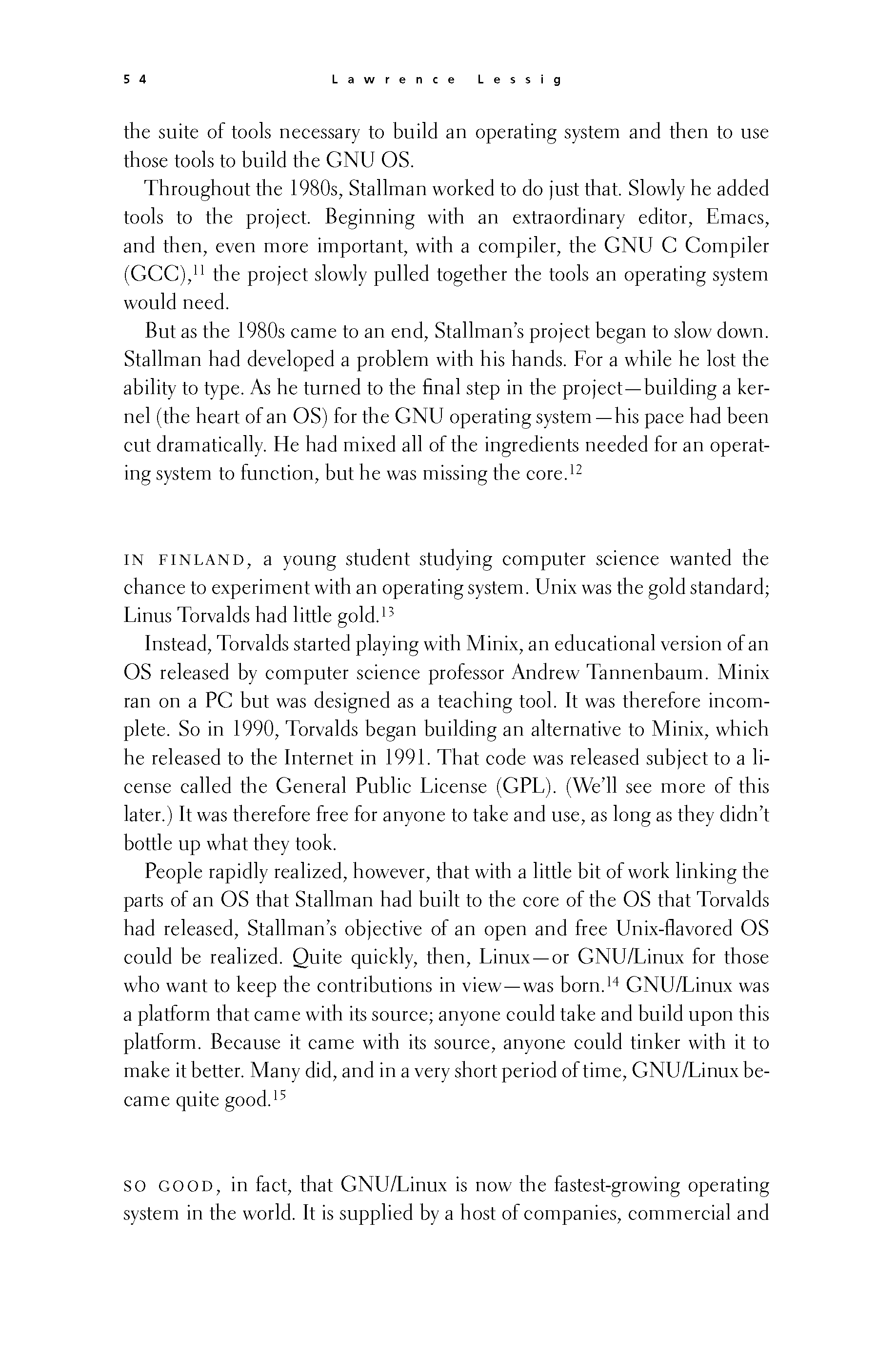 p053 _
-chap- _
toc-1 _
p054w _
toc-2 _
+chap+ _
p055
p053 _
-chap- _
toc-1 _
p054w _
toc-2 _
+chap+ _
p055
the suite of tools necessary to build an operating system and then to use
those tools to build the GNU OS.
Throughout the 1980s, Stallman worked to do just that. Slowly he added
tools to the project. Beginning with an extraordinary editor, Emacs,
and then, even more important, with a compiler, the GNU C Compiler
(GCC),[4-11] the project slowly pulled together the tools an operating system
would need.
But as the 1980s came to an end, Stallman's project began to slow down.
Stallman had developed a problem with his hands. For a while he lost the
ability to type. As he turned to the final step in the project -- building a ker-
nel (the heart of an OS) for the GNU operating system -- his pace had been
cut dramatically. He had mixed all of the ingredients needed for an operat-
ing system to function, but he was missing the core.[4-12]
///\\\
In Finland, a young student studying computer science wanted the
chance to experiment with an operating system. Unix was the gold standard;
Linus Torvalds had little gold.[4-13]
Instead, Torvalds started playing with Minix, an educational version of an
OS released by computer science professor Andrew Tannenbaum. Minix
ran on a PC but was designed as a teaching tool. It was therefore incom-
plete. So in 1990, Torvalds began building an alternative to Minix, which
he released to the Internet in 1991. That code was released subject to a li-
cense called the General Public License (GPL). (We'll see more of this
later.) It was therefore free for anyone to take and use, as long as they didn't
bottle up what they took.
People rapidly realized, however, that with a little bit of work linking the
parts of an OS that Stallman had built to the core of the OS that Torvalds
had released, Stallman's objective of an open and free Unix-flavored OS
could be realized. Quite quickly, then, Linux -- or GNU/Linux for those
who want to keep the contributions in view -- was born.[4-14] GNU/Linux was
a platform that came with its source; anyone could take and build upon this
platform. Because it came with its source, anyone could tinker with it to
make it better. Many did, and in a very short period of time, GNU/Linux be-
came quite good.[4-15]
///\\\
So good, in fact, that GNU/Linux is now the fastest-growing operating
system in the world. It is supplied by a host of companies, commercial and
[[54]]
p053 _
-chap- _
toc-1 _
p054w _
toc-2 _
+chap+ _
p055